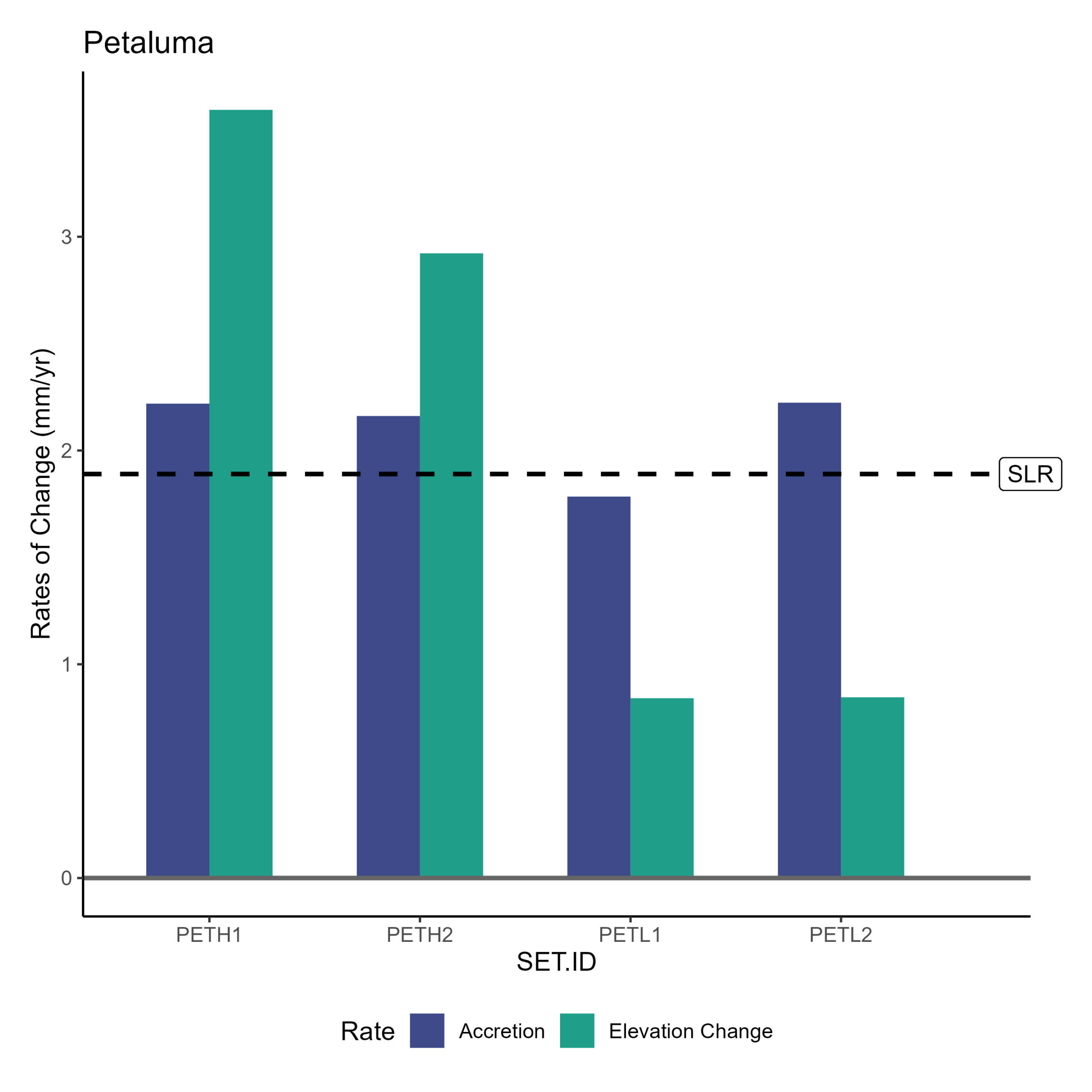
Surface Elevation Tables - Marker Horizons
Reduction in Bay sediments poses concern for tidal wetland persistence over time. Surface elevation tables (SETs) and marker horizons are used together to measure if tidal wetland elevations are increasing at a rate proportional to sea level rise. They are installed at multiple locations in a tidal wetland to understand variability within a given wetland. By precisely measuring the distance between the SET equipment and the marsh surface (to measure elevation change) and the depth of sediment and plant material deposited by tidal waters (to measure accretion) at the same location over time, researchers can calculate change rates and compare against the local rate of sea level rise. If this change is at or above the sea level rise rate (dashed line in graphic), wetlands are keeping pace. If this change is below, however, the wetland is not keeping pace and this could result in changes in vegetation to plants that can withstand longer periods of inundation or complete loss of vegetation.
Downloads:
PNG
Science Framework
The creation of this metric is guided by our Science Framework Management Question(s):
- What is the distribution, abundance, and condition of tidal marsh ecosystems, and how are they changing over time?
- How are tidal marshes and tidal flats, including restoration projects, changing in elevation and extent relative to local tidal datums?
- What are the regional differences in the sources and amounts of sediment available to support accretion in tidal marsh ecosystems?
- Where and when can interventions, such as placement of dredged sediment, reconnection of restoration projects to watersheds, and construction of living shorelines, help to sustain or increase the quantity and quality of tidal marsh ecosystems?
Looking for local data and information?
Data are available at the WRMP Data Portal and at Sciencebase.gov.